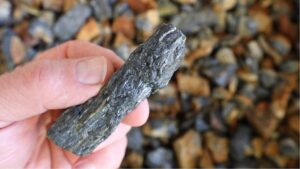Red Mountain hits ground running at Armidale with antimony-gold wins

Since picking up the ground, Red Mountain has been quick to pull impressive antimony-gold results out of its Armidale project. Pic: Getty Images
- Rock chip, soil and auger sampling at Oaky Creek return antimony in soils results of up to 333ppm
- Rock chip values of up to 39.3 Sb and 1.09g/t gold also delivered
- More exploration planned for November
Special report: Red Mountain Mining has punched out consistent high-quality results in the first nine months of its tenure at the Armidale antimony-gold project in NSW.
Red Mountain (ASX:RMX) is exploring for a look-a-like of Larvotto Resources’ (ASX:LRV) nearby Hillgrove project, Australia’s largest and the world’s eighth largest antimony deposit.
Hillgrove has been the poster child for how quickly the market can re-rate critical-minerals stories when they stack up.
Since Larvotto picked it up late last year, its market cap has rocketed from sub-$6m to north of $700m, capped this week by a non-binding indicative takeover offer from the US$2.5bn-capped United States Antimony Corporation.
So far, Red Mountain has mapped high-grade antimony at the Oaky Creek prospect, which returned grades up to 30.3% Sb with associated gold up to 1.09g/t over a 3km strike – the sort of vein-style orogenic system that underpinned Hillgrove’s breakout.
Rock chips in hand and 100 new stibnite targets
Early reconnaissance work including rock chip sampling at the East Hills antimony prospect returned up to 9.9% Sb while first-pass work at the Horsley Station gold prospect delivered up to 0.25g/t Au.
Lab results for the auger program at Oaky Creek and soil work at East Hills are pending, but with the numbers already in hand looking strong, the dataset is building the right way.
Red Mountain brought in geophysics group Dirt Exploration to run a multispectral analysis of the Armidale tenure using Sentinel-2 satellite imagery.
Dirt’s “unmixing” of the VNIR and SWIR data lit up a string of stibnite signatures across the project area, with a clear structural bias – many of the anomalies line up with, or run parallel to, the Peel Fault system.
In total, around 100 features were flagged.
Interestingly, the satellite data highlights the Horsley Station gold target, even though neither Oaky Creek nor East Hills, where stibnite has been physically sampled at surface, show a spectral response, further broadening the search space.
The dataset has also thrown up a suite of new leads for ground-truthing, including several along the Namoi Fault and at the northern end of EL9732, where old alluvial gold workings exist but antimony has never been logged.
Extensive exploration kicking off in November
With a fully funded exploration schedule firing up in November – plus more assays due in the same window – the company is pressing its first mover advantage edge while governments on both sides of the Pacific throw money at critical mineral supply chains.
That momentum hardened this week after the US President and Australian Prime Minister signed a Critical Minerals Framework and earmarked US$3bn for “immediate deployment” into projects nationwide over the next six months.
Further work is planned at East Hills to follow up initial positive antimony rock chip results, with the exact targeting to be finalised following receipt and interpretation of the results of the soil sampling program.
Soil and rock chip sampling is also planned for the Horsley Station and Horsley North gold targets.
RMX is also working to secure land access to ground truth stibnite and jarosite spectral anomalies across EL9732, those that lie adjacent to known mineralisation and/or are along the known major Peel, Namoi and Cobbadah faults.
This article was developed in collaboration with Red Mountain Mining, a Stockhead advertiser at the time of publishing.
This article does not constitute financial product advice. You should consider obtaining independent advice before making any financial decisions.
Related Topics

UNLOCK INSIGHTS
Discover the untold stories of emerging ASX stocks.
Daily news and expert analysis, it's free to subscribe.
By proceeding, you confirm you understand that we handle personal information in accordance with our Privacy Policy.








